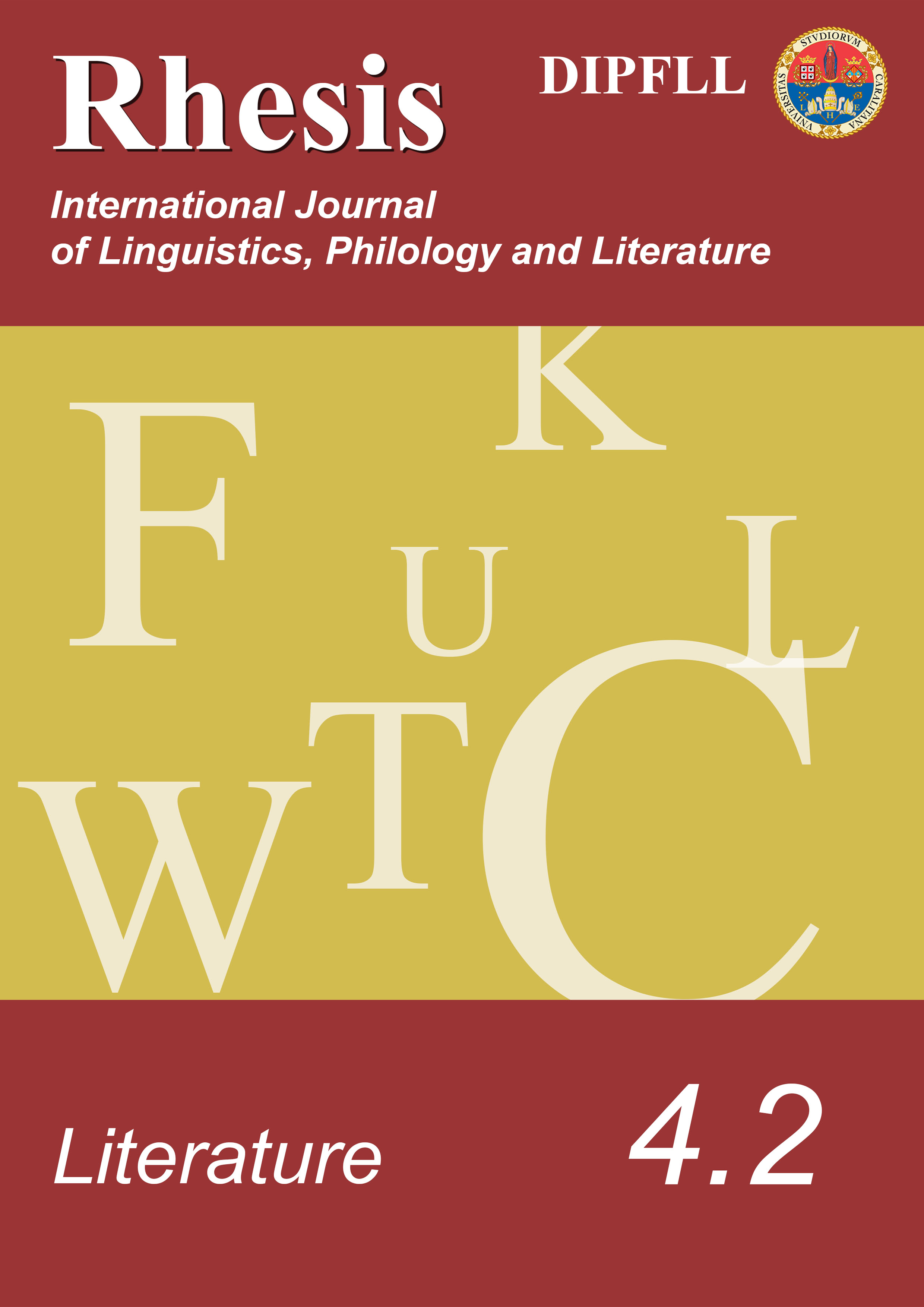Strategie e configurazioni allegoriche nel Laberinto de Fortuna di Juan de Mena
Abstract
Juan de Mena’s Laberinto de Fortuna (1444) is built on three textual levels: a strictly allegorical one ˗ related to the problem of knowledge, the relationship between Fortune and Providence and the problem of Time ˗ an historical-political level and a moral one. One of the main problems of Juan de Mena’s allegorical representation lies in the representation of Time, so that, by means of this performance, the author also shows and suggests us his own concept of Time.
The textual allegorical strategy of the Laberinto is largely based on a double divergence: on the one hand the text shows a divergence between the visionary-self and the experiential-self, and, on the other hand, it shows a divergence related to time, since, effectively, the only spinning wheel is the wheel of the present, whereas the wheel of the past and the wheel of the future remain motionless. From here stems the idea that Fortune is essentially the Time in its arduous complexity.
Moreover, the two terms of Juan de Mena’s allegorical discourse, Providence and Fortune, are represented in opposite ways: the first is an hypostasis deriving from the visionary and transcendental ‘self’ of the author; the second is primarily an absence, a pure factuality remaining undetermined, de-personified, and not crossing the threshold of personification.
Similarly, the labyrinth itself is absent, in a way that means the lack of discernment, in a mind not guided by Providence. Finally, the labyrinth/laberinto performed by Juan de Mena, turns to be eminently a textual labyrinth, where the reader needs to disentangle to get to the bottom of its meaning.
Downloads
References
BURKE, James F., “The Interior Journey and the Structure of Juan de Mena’s Laberinto de Fortuna”, «Revista de Estudios Hispánicos», 22.3 (1988), pp. 27-45.
Juan de Mena, Laberinto de fortuna, edición, introducción y notas de Maxim P. A. M. KERKHOF, Madrid, Castalia, 1997.
LAPESA, Rafael, “El elemento moral en el Laberinto de Mena: su influjo en la disposición de la obra”, «Hispanic Review», 27.3 (1959), pp. 257-266.
POST, Chandler Rathfon, “The sources of Juan de Mena”, «The Romanic Review», 3 (1912), pp. 223-279.
STREET, Florence, “The Allegory of Fortune and the Imitation of Dante in the Laberinto and Coronaçion of Juan de Mena”, «Hispanic Review», 23.1 (1955), pp. 1-11.
TAYLOR, Barry, “Juan de Mena, la écfrasis y las dos fortunas: Laberinto de Fortuna, 143- 208”, «Revista de Literatura Medieval», 6 (1994), pp. 171-181.
YORBA-GRAY, Galen B., “The Future as Eschatological Presence in Juan de Mena’s Laberinto de Fortuna”, «Journal of Christianity and Foreign Languages», 5 (2004), pp. 23-39.



